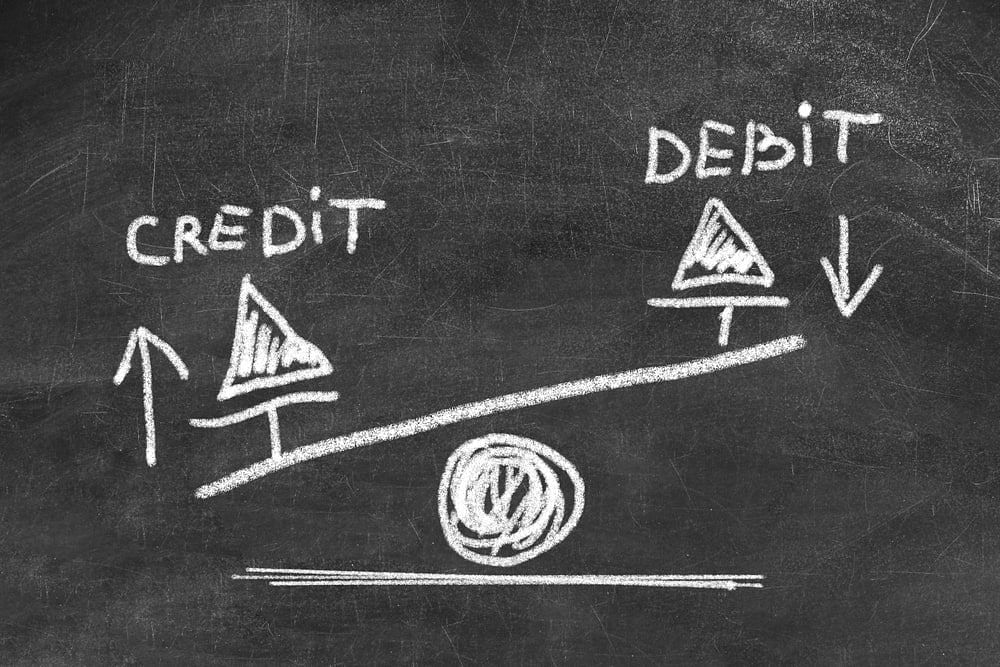
One of the numerous responsibilities of managing a business is bookkeeping. A business needs to record all its assets and expenses to determine how good—or bad—the business is doing. Good bookkeeping is the foundation of seamless accounting, and we're here to help you with your bookkeeping process.
In this article, we'll discuss how double-entry accounting works and why this bookkeeping method is the one you should use for your business.
The practice of documenting transactions in at least two accounts is known as double-entry accounting. Transactions in double-entry bookkeeping often appear in the debit and credit entries.
Having two columns allows you to monitor if both sides are balanced, which will help you pinpoint problems early on. Double-entry bookkeeping is one of the most efficient ways to monitor your company's financial health and growth.
If you plan to use this accounting method, you should know the different account types a transaction may fall into. Here are the primary account types for the double-entry accounting system.
A chart of accounts, which includes each account on the balance sheet and income statement where an accountant makes an entry, is necessary for the double-entry system. Companies can add and modify accounts to better reflect their unique operations, accounting, and reporting requirements.

It's possible for you to do double-entry bookkeeping manually. But, if you're using this bookkeeping method, getting an accounting software will make it easier to set up and prevent errors.
Accounting software options are not just for accountants. They are designed with business owners in mind. Even with little knowledge of accounting, you can surely use them with ease. To help you with the process, here are four crucial steps to start your double-entry bookkeeping system.
As previously stated, you need to record business transactions in at least two accounts for double-entry bookkeeping. The first step is to set up the chart of accounts where you'll be recording transactions.
Bookkeeping software can set up charts for your business automatically. Take advantage of the technology to make the process easier for you.
In this bookkeeping method, the debit entry is on the left side of the ledger accounts, while the credit entry is on the right. It makes it easier to see if your accounts are balanced this way.
A debit entry in the charts will increase the amount of assets and expense accounts. The amount of the obligation, revenue, and equity accounts will rise as a result of a credit entry. If you handle your finances properly at the end of the accounting period, all your accounts should be balanced.
Once your accounts are set up, and you understand how credit and debit work, you can start recording your financial transactions. For example, at the end of February, say you are due to pay $250 for rent. Here is how it would appear in your bookkeeping.
| Date | Account | Debit | Credit |
| 02/28/2023 | Cash | $250 | |
| 02/28/2023 | Expenses (Rent) | $250 |
If you only list the $250 in expenses at the end of the accounting period. You will find a missing $250 in your cash account. If you're lucky to remember where the money went, you have your book balanced, but if not, you'll have discrepancies in your data.
Consider another scenario where you spend $800 in business expenses.
| Date | Account | Debit | Credit |
| 03/12/2023 | Rental car | $350 | |
| 03/12/2023 | Meals | $160 | |
| 03/12/2023 | Hotel | $290 | |
| 03/12/2023 | Cash | $800 |
In double-entry accounting, you can clearly see the different expenses you use on your travel. This will give you a clear picture of spending patterns, which allows you to strategize how to spend and handle your finances.
After encoding all the data in your accounts, you will be ready to generate financial statements. Use these statements to assess the status of your financial health. Read and understand them to strategize further on how to lower your expenses or boost your revenue.
You can also use financial statements to get a bank loan. Furthermore, investors look at your financial statements to see if your business is eligible for sponsors or huge investments.
At first glance, the double-entry method may sound complicated because of the left and right entries you must do. But even professional accountants will recommend double-entry accounting for businesses. Here are some reasons why you should do it.
When you run a business, keeping an accurate record of your transactions is vital for business success. With double-entry bookkeeping, every detail of your finances is recorded. You can ensure the important numbers are noted, and it is easy to spot any discrepancies.
Furthermore, it makes it easier to track which businesses and individuals you owe as well as track those payments your business is yet to receive.
How you choose to handle your finances will dictate the success of your business. Double-entry accounting can help make more informed business decisions that cater to its growth.
For example, in double-entry bookkeeping, you break down all the expenses. It can be for travel, marketing, or even replenishing your inventory. You can analyze the data and brainstorm strategies to control your costs. It helps you make decisions if you need to control your money or spend more towards the development of your business.
The big difference from single-entry accounting is that double-entry accounting is more comprehensive, allowing business owners to widen their financial analysis. Imagine if you have a single-entry accounting process that only shows your expenses. You cannot compare it with anything, other than the historical data you have on hand.
But with double-entry accounting, you can see the money coming into your business. This will give you confidence that you are also gaining profit as you spend to run business operations.

One thing about double-entry accounting is it's complicated for business owners, especially those new to the industry. But don't worry! Unloop is here to help small business owners with their double-entry bookkeeping.
We are a team of experts that helps businesses with their bookkeeping and accounting needs to grow in their industry. We offer bookkeeping services which include:
On the surface, bookkeeping is simply keeping an organized and complete record of business transactions. But in reality, keeping up with recording is a challenge, especially when you handle all the other tasks in your business. Professional services ensure that every dollar that goes in and out of your business is accounted for.
We hope this quick overview of double-entry accounting helps you understand bookkeeping for your small business. Remember, Unloop offers several accounting services if you need more professional help. Talk to our experts by booking a call with us today!
Unloop is the first and only accounting firm exclusively servicing ecommerce and inventory businesses in the US and Canada. With the power of people and technology, our team dives deep into COGS and inventory accounting. You are paired with a dedicated bookkeeping team that prepares accurate financial statements, financial forecasts, and can also pay bills or run payroll for you. Come tax time, everything is organized and ready to go, so you don't need to worry. Book a call with an ecommerce accountant today to learn more.